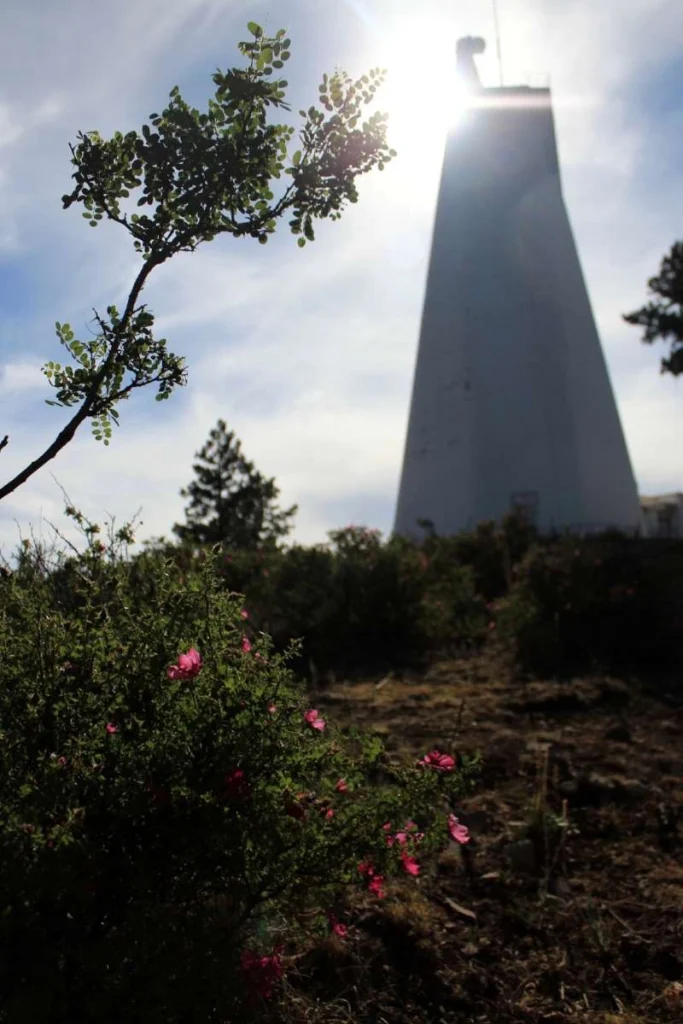Keeping an Eye on the Sun

About Sunspot, New Mexico
Sunspot is an unincorporated community in the Sacramento Mountains in
Otero County, New Mexico, United States. It is located within the
Lincoln National Forest, 18 miles south of Cloudcroft, at an elevation
of 9200 feet (2800 m). It was named after the nearby National Solar
Observatory on Sacramento Peak. The sole road that drives into Sunspot
is New Mexico State Road 6563,
named for the brightest wavelength of hydrogen emission, H-alpha, one
of the most important spectral lines in astrophysics. The night-time
Apache Point Observatory and Sloan Digital Sky Survey telescope are
about 1/2 mile from Sunspot, on an adjacent peak.
About the Telescope
The Richard B. Dunn Solar Telescope, abbreviated as the DST, is a unique vertical-axis solar telescope, located on the western edge of Sunspot overlooking the Tularosa Basin. The optical path starts at a heliostat on top of a 136-foot-tall (41 m) concrete tower and continues 193 feet (58.8 m) more underground to the primary mirror, which is 64 inches (1.6m) in diameter. It then returns to one of six quartz optical windows in the floor of an optical laboratory at ground level, where the scientific instruments are located. The entire optical path is kept in a vacuum to eliminate distortion due to convection in the telescope that would otherwise be caused by the great heat produced by focusing the light of the sun.
The telescope tube, optical laboratory, and instruments are connected as a single freely-rotating platform, weighing 350 tons and floating on over 120 gallons of liquid mercury. Originally named the Vacuum Tower Telescope at Sacramento Peak, it was renamed in 1998 in honor of the retiring solar astronomer Richard B. Dunn who was the driving force behind its construction.
The telescope was originally built by the United States Air Force, completing construction in 1969. Following several years of operation, ownership of the observatory was transferred to the National Solar Observatory (NSO), part of the National Science Foundation, in 1976. The NSO carried out research into the Sun as an astronomical object in Sunspot from 1976 to 2017. The telescope was highly prolific scientifically, and during the height of operations, a new instrument setup was built roughly every ten days. From 2016 to 2018 the New Mexico State University, funded by NSF, initiated a drive to upgrade and update the telescope, with the goal to form the Sunspot Solar Observatory Consortium that has run the telescope since late 2017.
Other Solar Facilities in the Area
The DST was not the only solar telescope at Sacramento Peak; throughout the site’s history, several other solar observing facilities were operational. The Grain Bin Dome (1951), built from a Sears & Roebuck catalog, was the first permanent telescope fixture. The Big Dome, later renamed the John W. Evans Solar Facility, began operation with a coronagraph in 1952, and the Hilltop Dome, just north of the DST, was constructed in 1962. Of these facilities, only the DST remains in active use.
